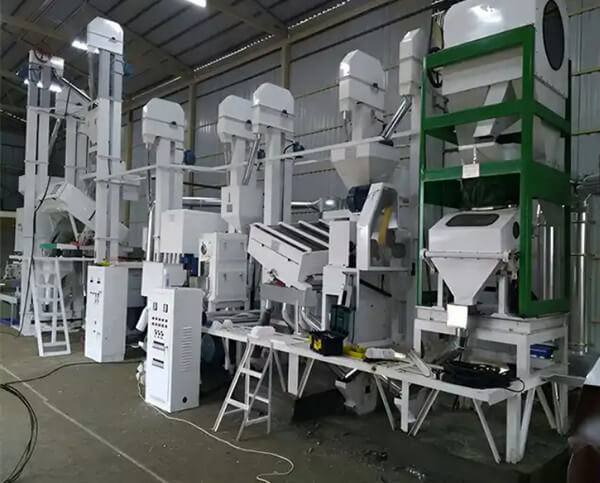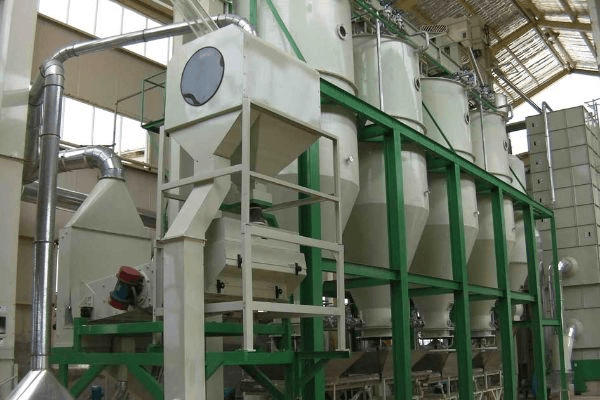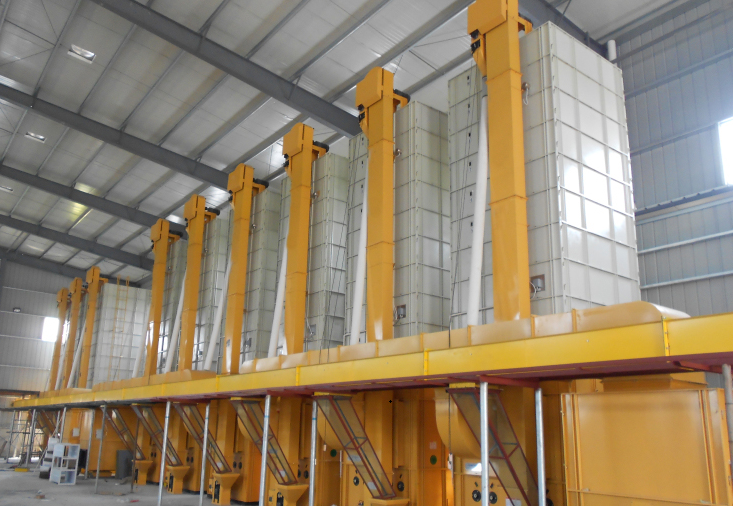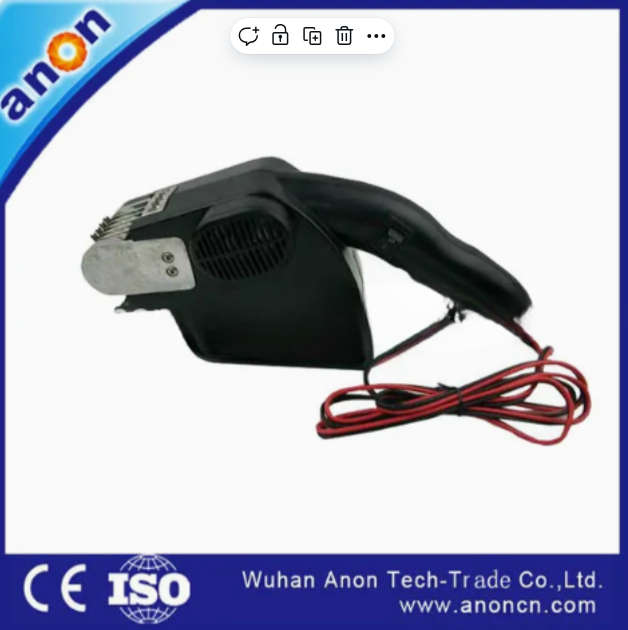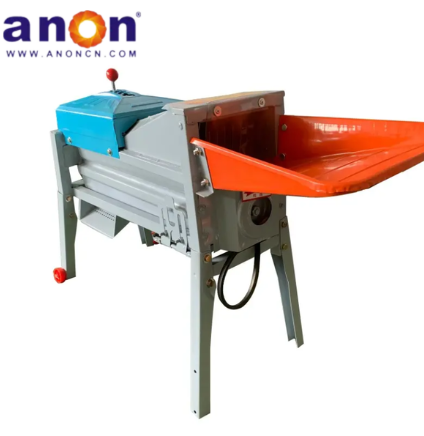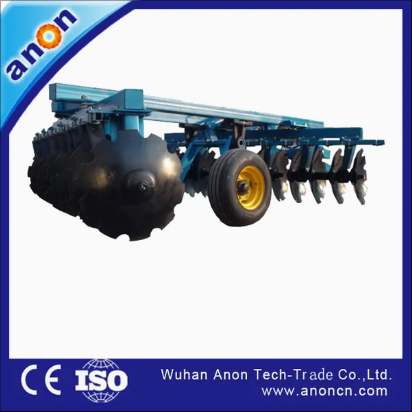Introduction
Steel silos are steel vertical silos that are very suitable for storing bulk materials. You can see them in agriculture, construction, the chemical industry, and other industries. In agriculture, you can see steel silos in food processing, grain storage and fermentation of silage. This article will introduce steel silos from the aspects of structure, types, advantages and maintenance.
Construction
The structure of the steel silo is very simple. Usually composed of steel plates and supporting frames, it is convenient for quick construction and adjustment. At the same time, when designing the steel silo, we must consider the protection and ventilation needs of the materials. Therefore, we also need to include some supporting systems and equipment. They are ventilation systems, temperature measurement systems, material level systems, automatic control systems, safety protection facilities, and alarm systems.
The ventilation system maintains air circulation in the warehouse, reduces humidity, and prevents materials from getting damp and deteriorating. The temperature measurement system is mainly to monitor the temperature inside the warehouse in real time. This ensures suitable temperature conditions for material storage. The material level system is to detect the inventory of materials in the warehouse. Helping you improve storage efficiency and reduce labor costs. It has safety protection facilities to protect staff from falling and rodent damage. Finally, there are alarm systems、smoke detectors, and water spray systems to prevent fires.
Types of steel silos
Welded steel silo
Welded steel silo is a cylindrical metal silo manufactured by welding technology. You can use it for grain storage, building materials, coal, chemicals, and other bulk materials.
Welded steel silos are suitable for large-capacity storage needs, such as cement, grain, feed, etc., with a single capacity of 10,000-100,000 tons. Welded steel silos can be used for materials with high requirements for sealing, such as high-pressure and highly corrosive materials, because they have good airtightness. The walls of welded steel silos are thicker and can carry larger loads. If we provide proper maintenance, we can use them for a longer period of time, up to 50-80 years. The discharging system of welded steel silos is relatively advanced. We use a pneumatic discharging system that relies on pneumatic pressure to transport materials in the warehouse to the designated location. This system has high discharging efficiency.
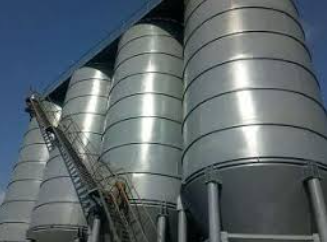
However, the construction of welded steel silos is difficult, requiring high welding technology and construction level. And the construction period is long. Its wall thickness is large, it uses a lot of materials, and the construction cost is relatively high. Because the structure of welded steel silos is relatively strong and difficult to disassemble, it is not conducive to later transformation and relocation.
Assembled steel silo
Assembled steel silo is a kind of steel silo that is pre-processed in the factory and assembled on site with high-strength bolts. It has a fast construction speed and low technical requirements. In addition, the prefabricated steel silo uses less steel and has a lower cost under the same specifications.
Assembled steel silos are widely used in grain, oil, brewing, cement, coal and other industries to store various powdered and granular materials. In agriculture, you can use it to store grain crops such as wheat, corn, and rice. However, because of the bolt connection, its air tightness is relatively poor and is not suitable for the storage of materials with high air tightness requirements.
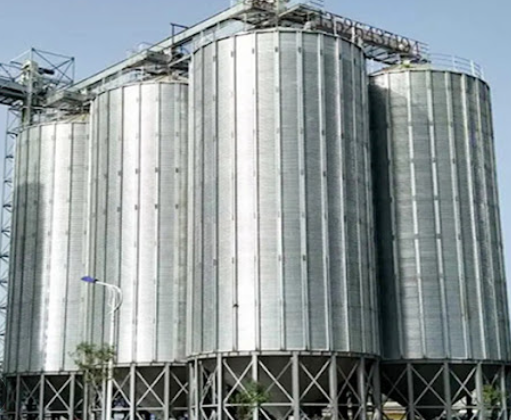
The siding of assembled steel silos is usually corrugated. This design enhances the structural strength of the silo and improves its ability to resist wind pressure and snow load. We connect the sidings using high-strength bolts. This method is convenient for construction and also beneficial for later disassembly and replacement. We can expand and renovate the silos according to actual needs. Because we use high-strength steel plates and high-quality connection methods, the service life of the silos is also long.
Spiral steel silo
The spiral steel plate silo is a steel plate silo with a spiral design. The silo wall panels are connected by spiral bite edges through a special processing method. This connection method greatly enhances the structural strength of the silo wall and the bearing capacity of the cylinder, making the silo more stable and having a long service life. The spiral bite edge structure makes the connection of the silo wall airtight, effectively preventing material leakage and external pollution.
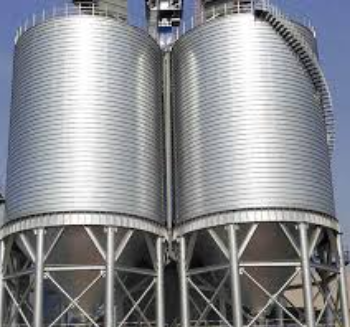
We widely use spiral steel silos in grain processing, the petrochemical industry, building materials, and other fields to store various granular and powdery materials.In agriculture, spiral steel silos are ideal equipment for storing grains such as rice, wheat, corn, etc., and can effectively prevent grain from moisture, mildew and insect pests.
Its construction period is also relatively short. It adopts on-site construction, does not require scaffolding, and has a shorter construction period. Spiral steel silo has good air-tightness, which makes it convenient for fumigation and insecticide. It is suitable for storing grain and other materials that need to be kept dry. However, the structure of the spiral steel silo means that we cannot disassemble it and can only use it permanently. Currently, we limit the diameter and storage capacity of the spiral steel silo, making it unsuitable for storage needs of ultra-large capacity.
Insulated steel silo
The insulated steel silo is a steel silo with different insulation material layers such as sponge added to the outer side of the silo body to maintain the grain storage conditions at a lower ambient temperature state, meet the stability of grain storage, and achieve the purpose of long-term safe grain storage.
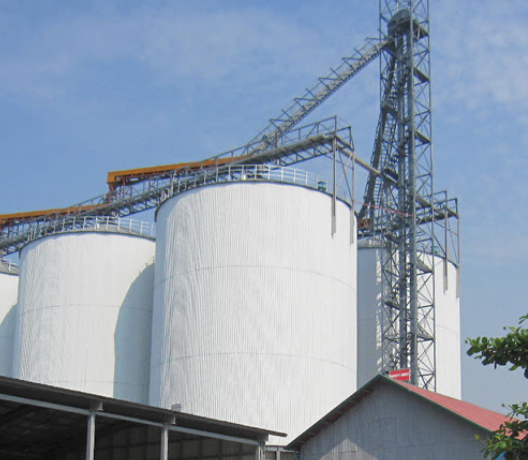
Insulated steel silos are suitable for places if you need to store your grain for a long time, such as grain depots and raw material warehouses of rice processing plants. Especially in the northern region where the temperature difference between the four seasons is large, insulated steel silos can effectively prevent the influence of external factors on grain and ensure the quality and safety of grain. It also has a ventilation system, which adjusts the temperature and humidity in the field through the ventilator air outlet and natural ventilation outlet on the top plate. Low-temperature storage can increase the storage stability of grain and extend the safe storage time. And it can achieve good insulation effect at a relatively low cost by installing an insulation layer on the outer wall of the silo. The general service life can reach about 30 years, and the maintenance cost is low.
Advantages of steel silos
So what are the advantages of steel silos?
Powerful storage capacity
First of all, steel silos have a strong storage capacity. You can build steel silos of different capacities, sizes, and shapes according to your needs to store your materials, fully meeting your large-scale production and storage needs. With advanced loading and unloading equipment, such as conveyors and elevators, steel silos can achieve rapid loading and unloading of materials, improve the efficiency of storage and unloading, and are convenient and efficient to use.
Lower construction and maintenance costs
We mainly make steel silos out of steel, which is cheaper than the materials used for building silos with concrete. We design steel silos mainly in a modular way, and we can assemble them on-site during construction. The construction speed is relatively fast and the cycle is short, which can greatly reduce the construction cost for you. We can disassemble, replace, modify, and relocate some types of steel silos later, and use them multiple times. Secondly, in terms of durability, the structural performance of steel silos is superior. And the material is steel, so they have high strength and stability, and can withstand greater pressure and impact. After special anti-corrosion treatment, steel silos can resist erosion in various harsh environments, extend their service life, and greatly save costs.
Energy saving and environmental protection
Compared with concrete silos, steel silos are more environmentally friendly because they produce less waste and pollutants during manufacturing and use, and do not generate noise and dust during use. Steel silos also achieve a higher space utilization rate, which helps reduce the waste of land resources. We can recycle and reuse the steel they use, and they are harmless to the environment.
Maintenance of steel silos
Steel silos, being open-air storage equipment, are exposed to wind and sun, so we need to maintain them to extend their service life.
Cleaning and antiseptic
The staff should regularly clean the residual materials, dust and other debris inside the steel silo to keep the site clean. We should regularly turn over or clean materials that are easy to agglomerate or deteriorate to prevent them from agglomerating and deteriorating. We should also regularly clean the dust and debris outside the steel silo. In particular, we should clean the oil stains and rust attached to the silo body in a timely manner and coat them with anti-rust paint and other protective materials. Check the rust of the steel silo wall every year to check whether it is intact and whether there is any peeling or blistering. Apply new anti-corrosion paint in time to the damaged coating parts.
Avoid overloading and fire
During operation, we should clearly avoid overloading the steel silo or operating with fire in the silo.
First of all, we should clearly forbid adding auxiliary settings to the steel silo without authorization to prevent overloading. If the top conveying equipment vibrates abnormally, we should stop it and repair it immediately. Although the steel silo has powerful storage function, overloading will cause accidents such as deformation, rupture and even collapse of the steel silo. At the same time, overloading will also reduce the storage effect of materials. There may be uneven accumulation in the steel silo, which will affect ventilation and heat dissipation, causing the material to become damp and deteriorate. Too much material may also cause blockage and make the loading and unloading equipment unable to work normally, which will reduce the operation efficiency and increase the operating cost.
Secondly, most of the materials stored in the steel silo are granular and powdery, so they gather a large amount of dust. This dust is very prone to causing a dust explosion. When we must carry out fire operations, we should prepare the working conditions in advance. We should also take ventilation or other safety measures to ensure safety before proceeding.
Regular inspection
Regular inspections can reduce a lot of safety hazards for you and solve problems in time to avoid the loss of stored materials. You need to maintain the silo roof cover and platform at least once a year. Remember to deal with the rust on the component’s surface in time if you find it. We should check the silo roof tension ring, process holes (such as ventilation holes, entry holes, temperature measurement holes, etc.), and other bolted connection parts once a month to ensure they remain intact. Additionally, we should inspect whether the fastening bolts are loose, whether the gaskets are damaged, and whether the surface is rusted and needs sealing. If we find any problems, we should maintain them in time. We should check the welds every six months.
Pay attention to the deformation of steel silo
If a deformation is found in the steel silo, it should be corrected and repaired promptly. We must check the silo’s verticality every six months, both when it’s full and when it’s empty. After each grain unloading, inspect the silo wall for deformation and the connection between reinforcement ribs and silo wall bolts. Based on inspection results, determine appropriate treatment measures.
Over time, steel plates around the silo door may deform or crack, requiring maintenance as needed. If we find abnormal conditions like welding deformation or desoldering in the cone bucket connection, welding, or cone bucket plate surface, we should stop grain intake and perform maintenance.
Inspect attached parts of the steel plate silo, such as the derrick, ladder, corridor, and trestle, every three to six months, keeping records and paying special attention to paint and welding parts. Treat rusted parts with anti-corrosion measures and address welding deformations immediately to ensure staff safety.
Conclusion
Steel silos are a good helper for grain storage. If you are interested in steel silos, please feel free to contact us. We can provide customized solutions that meet your needs.
FAQ
What is at the bottom of a silo?
The bottom of a silo is typically referred to as the “silo base” or “silo foundation.” It serves as the foundation for the entire silo structure, supporting both the silo itself and the load of materials stored within it.
What is the difference between a tank and a silo?
What is the difference between silos and tanks? A commonly held distinction between silos and tanks is that silos hold dry bulk while tanks hold bulk liquids, such as oil. A storage silo is very similar in construction to a vertical tank, and both can be customised to suit the product or chemical they are holding.


